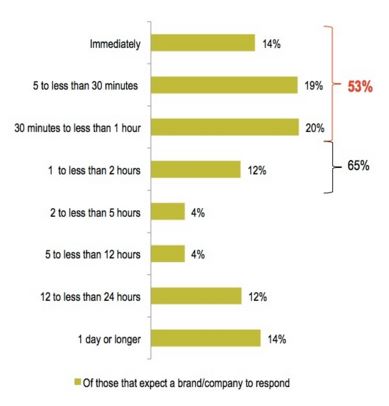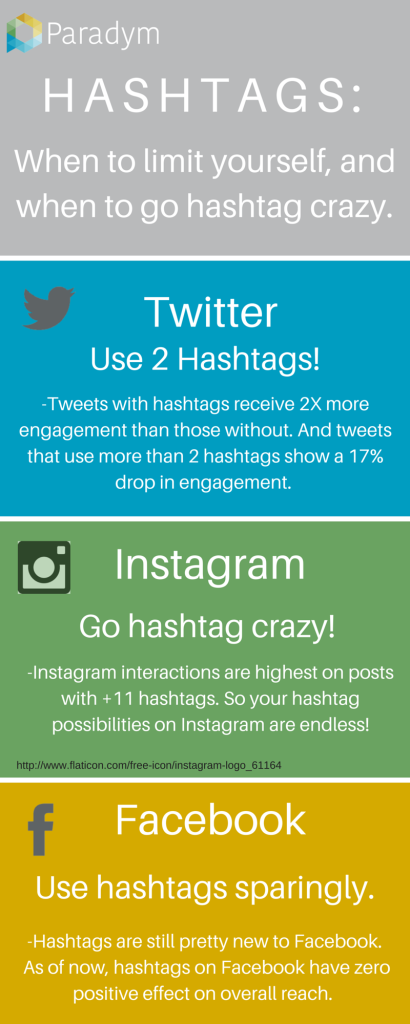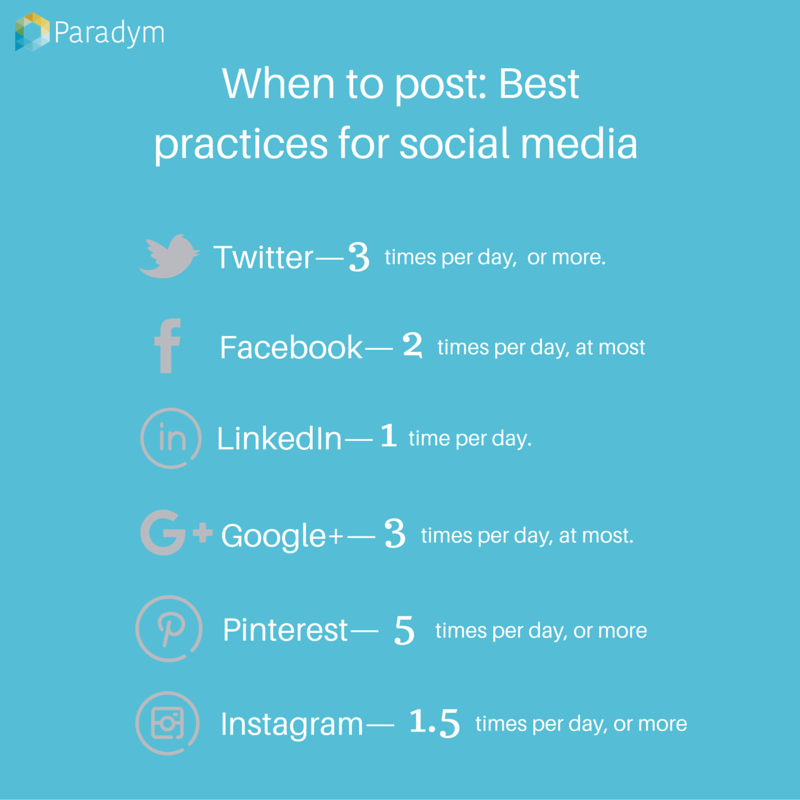Realtor’s Guidebook: Social Media Etiquette 101
“Etiquette is behaving yourself a little better than is absolutely essential.”—Will Cuppy
One of the first things we teach our children is to mind their manners. Say “please” and “thank you,” don’t chew with your mouth open and always open the door for others. But minding your manners and following the rules aren’t just for the dinner table. Proper etiquette is also required in real estate social media marketing.
If you want to grow your following, increase your visibility, and ultimately, get more leads, you’ve got to follow the rules. Follow these 15 social media marketing guidelines, and you’ll be on your way to real estate social media success.
Rule #1: Be you
Authenticity has always been important. With social media, it’s critical.
According to Candice Charelton, Manager, Social for Hootsuite, “It’s clear that authenticity on social is key to having an engaged audience. Whether you’re involved in social marketing, customer service, community building or all of the above, being real to build relationships is where it’s at.”
Home buyers are looking to connect to a person, not a computer screen. Show everyone on social media that you’re a real person who wants to build real relationships and have honest conversations.
Rule #2: Practice the 80/20 rule
When sharing content on social media, the 80/20 rule still applies. Following this rule means 20% of the content you share should be self-promoting—content that deals with your brand and benefits such as strong calls to action. And the other 80 % should be non-branded, compelling content that plays into the interests of your audience—think inspirational quotes, retweeting others’ content, and relevant news articles.
The 80/20 rule is more of a guideline than a steadfast decree, so feel free to experiment and see what content percentage works best for you and your audience. The point here is to just not be that person that only talks about themselves.
Rule #3: Be timely
Social media is all about instant gratification. So if your followers pose a question, be sure to answer it as quickly as possible.
According to a study produced by Lithium Technologies, 53% of customers who ask a brand a question on Twitter expect a response within 1 hour, regardless of when they tweeted, and 72% expect the same if it’s a complaint.
Check-out the below chart of consumer response expectations from Brandwatch. The chart displays how quickly users expect a response on social media. For instance, 14% expect an instant response while 53% expect a response within an hour.
When consumer response expectations aren’t met, the fallout could be severe—resulting in harsh consequences such as public shaming and loss of business.
So give home buyers what they want and respond timely to their social media requests.
Rule #4: Keep it professional
Social media is a great place to share family photos and memories with friends. But that place is on your personal social media page, not your business page.
Your business page is for, well…business.
Your followers are following you because the want to learn more about your real estate brand and your listings. They don’t need to know the in’s and out’s of your daily life. So while it’s okay to share personal photos and stories, be careful not to go overboard. You can still be yourself and show a little humor without sharing overly personal content.
Put yourself in your client’s shoes, if you were a home buyer, what would you want to know? That’s the content you should share.
Rule #5: Abide by the Golden Rule
The same principle you were taught in Kindergarten still applies today— “Treat others the way you would like to be treated.”
Your business social media page is not the place for name calling or digital altercation. If things get heated, it’s time to put into practice another principle you learned when you were young— “If you don’t have something nice to say, don’t say anything at all.”
When it comes to social media, always avoid touchy subject and treat your followers with the utmost respect.
Rule #6: Don’t delete negative comments
If you’re active on social media, it’s a given that you’ll receive a negative comment at some point.
As tempting as it might be, hold-off from hitting the delete button.
When it comes to negative online feedback, it’s often the response and not the actual complaint that audiences will notice. So instead of deleting the comment, reach out and attempt to resolve the situation. This is an opportunity to let your professionalism and reasonableness shine.
Of course, there are extremes when vulgarities and obscenities are thrown about—in those instances, delete away.
Rule #7: Keep it to one profile per network
Social media can get confusing, especially when it comes to having multiple accounts. Not only is it hard to juggle multiple accounts on the same network, it’s confusing for your followers. Do they reach out to you on your first account or your second?
For real estate, opening multiple accounts on the same social media network doesn’t broaden your reach, if anything, it just makes it harder for you to market yourself. Do yourself and your followers a favor and keep it to one business account per social networking platform.
Rule #8: Stay relevant: use hashtags
Unless you’re digitally unplugged, you know what hashtags are. A hashtag is a word or phrase preceded by the pound sign (#) and used to label messages on a specific topic (#realestate, #dreamhome).
A social media phenomenon, the hashtag allows you to connect with and engage with other social media users based on common topics or interests—including real estate. Knowing the power of hashtags and how to use them is essential to your overall social media success.
Of course, you can have too much of a good thing. Depending on the social media platform, using too many hashtags can do more harm than good. Check-out the chart below for when to be hashtag conservative and when to go hashtag wild.
Rule #9: Use proper grammar and spelling
When you post content on social media, you’re inviting the world to be your spellchecker. If you made a spelling mistake on your social media post, you can count on your followers noticing it. And no one wants to be called out for a spelling mistake on social media.
It’s always best to proofread, then proofread again before hitting the post button.
And if you’re not sure how to spell a word, you can always take advantage of a spellchecker or one of many online dictionaries.
Rule #10: Be wary of the content you share
The goal is to always keep your social profiles full of relevant, helpful, interesting content, and sometimes that takes a lot of work. But you shouldn’t share just anything. Filter through all content before associating it with your account and sharing it with your followers. Be wary of any inappropriate or politically charged content. If you think it could offend someone or start an argument, it’s best to stay away.
Also, steer clear from copyrighted material. Not all online images are free. Be wary sharing images you found on Google Image Search. Some images have a copyright, and sharing copyrighted material as your own is illegal and could result in a lawsuit.
So don’t be a thief. Don’t use copyrighted material, and if you’re not sure if an image is copyrighted, you can always create your own image. There are lot of free online resources, great for creating your own social media images ( Canva, Makerbook, AllTheFreeStock and more).
Rule #11: Automation is helpful but doesn’t do it all
Don’t struggle at social media alone, there’s tons of automation resources that can generate, schedule, distribute and track content for you. Buffer and Hootsuite are examples of awesome social media automation tools—while Paradym’s Social Automation Manager (better known as SAM), is a social media automation service designed specifically for real estate professionals.
And while social automation services can automate your content, there are some things they can’t do. It’s still up to you to give your social media a personal touch. Only you can listen, engage and interact with your followers.
Rule #12: Learn the group rules
Social media success isn’t just about content, it’s also about networking. Joining social media groups and communities is a great way to network and generate more leads. But make sure you read the group or community rules thoroughly before promoting yourself and your brand.
Many social media groups don’t allow self-promotion of any kind. So if you don’t want kicked out, it’s best to know the rules beforehand.
Rule #13: Don’t be a spam bot
There’s no better sign that you’re doing something right than receiving a notification of a new social media follower. It’s a great feeling that you’ll definitely want to have again and again.
You may be tempted to get as many followers as you can, going “follower crazy” and following any and every account—but doing so could cause more harm than good.
Twitter accounts that are following far more people than follow them back look suspicious.
So think before you like or follow someone on social media. Ask yourself, Is this person a legitimate connection, or am I simply trying to artificially fluff up my follower count?
Rule #14: When tragedy strikes, just lay low
When a public tragedy occurs, the best thing your company’s social media can do is to stay silent. At the risk of sounding insensitive or unintentionally offending your followers, it’s best to keep opinions and even condolences to yourself and not on social media.
The last thing you want your followers to think is that you’re taking advantage of a tragedy for self-promotion.
Rule #15: Learn the frequency
All social networks have their own unique rules and formulas for success. What works on Twitter may not be as successful on Facebook. Get to know your social media platform. Do your research on platform rules and secrets to success, including how often you should be posting to each network—posting too much or too little could be detrimental to your overall social media marketing strategy.
According to social automation website, Buffer, you should be posting the most frequently on Twitter and Pinterest, while posting the least often on LinkedIn and Instagram.
Check-out the chart below for a posting frequency break down by social media platform.
An active presence on social media is vital for growing your real estate marketing platform, increasing your website traffic, and jump-starting your lead generation. But being active alone isn’t enough. Following these simple guidelines will keep you from common marketing mistakes, and will help you achieve the social media success you’re working toward.




